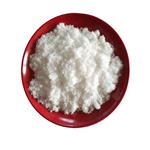Description
p-Methylanisole has a pungent odor suggestive of ylang-ylang.
May be prepared by methylation of p-cresol.
Chemical Properties
p-Methylanisole has a pungent odor suggestive of ylang-ylang.
Chemical Properties
colourless liquid
Occurrence
Reported found in the oils of ylang-ylang, cananga and flowers of Mimusops elengi L. Also reported found in
tomato, blue and Camembert cheese, starfruit, buckwheat, rooibus tea (Aspalathus linearis) and tapereba (Spondias lutea).
Uses
4-Methylanisole may be used as an analytical standard for the determination of the analyte in
Malus taxa flowers, coffee brews, aqueous matrices, food products, and
Ficus semicordata by various chromatography techniques.
Uses
4-Methylanisole was used to prepare 5-methoxy-1,8-dimethyltetralin. It was also used as the solubilizate molecule to study the site of incorporation of solubilizates in sodium dodecyl sulfate (SDS) micellar systems.
Uses
Perfumery, flavoring.
Definition
ChEBI: 1-Methoxy-4-methylbenzene is a member of methoxybenzenes.
Preparation
By methylation of p-cresol.
Aroma threshold values
Detection: 200 ppb
Taste threshold values
Taste characteristics at 20 ppm: naphthyl, phenolic, camphoraceous, cooling and woody.
General Description
4-Methylanisole is an odorant benzenoid belonging to the group of volatile organic compounds (VOCs). It can contribute to the floral scent of the plants. 4-Methylanisole is typically a lignin-derived bio-oil that is also a major ingredient of certain food products.
Safety Profile
Moderately toxic by
ingestion. A skin irritant. Flammable liquid
when exposed to heat, sparks, or flame.
When heated to decomposition it emits
acrid smoke and irritating fumes.
Purification Methods
Dissolve 4-methyl anisole in diethyl ether, wash it with M NaOH, water, dry (Na2CO3), evaporate and distil it under vacuum. The picrate has m 103o (from aqueous EtOH). [Beilstein 6 IV 2098.]








